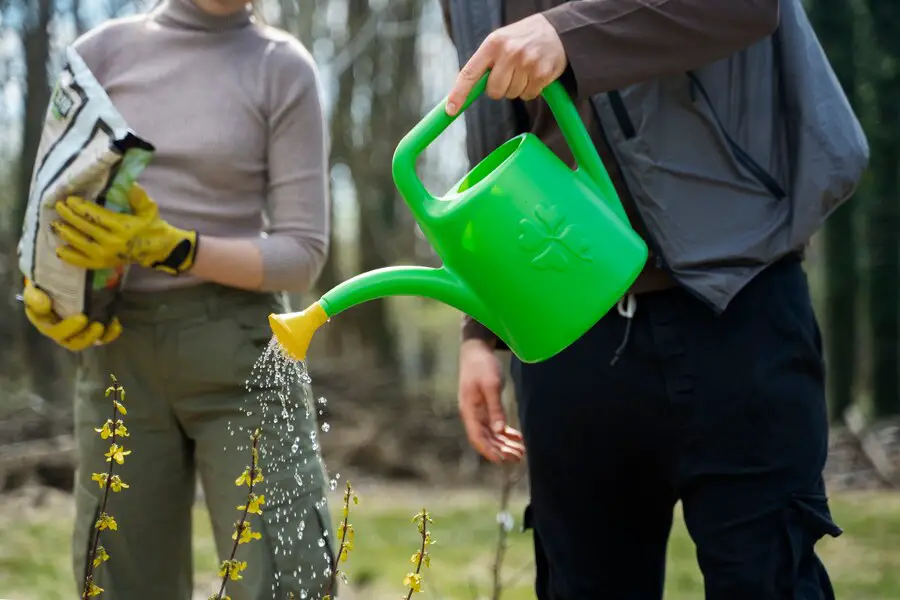
Proper watering is essential for maintaining a lush, healthy lawn. However, different grass types require varying watering schedules to thrive. Understanding the unique needs of your grass species can help you conserve water and achieve the best results. Here’s a breakdown of watering frequency for popular grass types.
1. Kentucky Bluegrass: Ideal Watering Schedule
Kentucky Bluegrass thrives in cooler climates, requiring regular but deep watering. During the growing season, water your lawn about 1 to 1.5 inches per week, ensuring the soil is moistened to a depth of around 6 inches. Water early in the morning to minimize evaporation and fungal growth. Avoid watering too frequently, as this can lead to shallow roots.
2. Bermuda Grass: Drought-Tolerant and Low Maintenance
Bermuda grass is well-known for its drought tolerance. This warm-season grass needs less frequent watering once established. Typically, watering once every 4-7 days should suffice, especially in the heat of summer. Ensure you water deeply to encourage strong root development. During cooler months, reduce watering to prevent overwatering and disease.
3. Fescue Grass: Consistent Moisture for Healthy Growth
Fescue grass prefers moderate climates and requires consistent moisture for optimal growth. Watering 1 to 1.5 inches per week is recommended during the growing season. During periods of high heat, you may need to water more frequently to keep the grass hydrated. Early morning watering is best, as it prevents excess moisture on the grass blades overnight, reducing the risk of fungal diseases.
4. Zoysia Grass: Efficient Watering for Warm Climates
Zoysia grass, another warm-season grass, is highly drought-tolerant once established. In the peak of summer, water deeply once a week. Zoysia’s dense growth allows it to conserve moisture efficiently. Be mindful of overwatering, which can lead to shallow root systems. In cooler months, reduce the watering frequency to once every two weeks or less.
5. St. Augustine Grass: Watering Needs for Coastal Regions
St. Augustine grass is commonly found in coastal regions and thrives in warm, humid climates. This grass type requires a bit more attention, especially in hot weather. Watering once every 3-4 days during the summer ensures the grass remains lush. During the cooler months, watering can be reduced to once every 7-10 days. Always ensure that water penetrates deep into the soil to encourage strong root growth.
6. Ryegrass: A Cool-Season Grass with Moderate Needs
Ryegrass is a cool-season grass that thrives in areas with mild temperatures. It requires consistent watering throughout the growing season, generally 1 to 1.5 inches of water per week. In hot and dry conditions, you may need to water more frequently. Be cautious of overwatering, as ryegrass is susceptible to root rot in overly saturated soil.
7. Fine Fescue: A Low-Water Grass for Shady Areas
Fine fescue is a low-maintenance grass that grows well in shady areas. It is particularly drought-tolerant and requires less frequent watering. Once established, it can thrive with only 1 inch of water per week. Water deeply but less frequently, especially during dry spells, to encourage deeper root growth.
8. Centipede Grass: Low-Water, Low-Maintenance Lawn
Centipede grass is a low-maintenance grass type that thrives in warm climates. It has relatively low water needs and should be watered about once every 7 to 10 days during the growing season. Once established, it requires minimal watering and is ideal for those looking for an easy-to-care-for lawn. Always avoid overwatering, as this grass can become waterlogged and prone to diseases.
General Watering Tips for All Grass Types
- Water deeply, not frequently: Grass roots grow deeper when watered thoroughly, leading to stronger, more drought-resistant lawns.
- Morning is the best time to water: Watering early in the morning reduces evaporation and prevents fungal diseases.
- Adjust for seasonal changes: In colder months, reduce watering to prevent the grass from becoming waterlogged.
- Consider soil type: Sandy soil drains faster and may need more frequent watering compared to clay soil, which retains moisture longer.
By understanding the specific watering needs of your grass type, you can maintain a healthy, vibrant lawn year-round. Make sure to adjust your watering schedule as needed to keep your grass thriving through every season.



